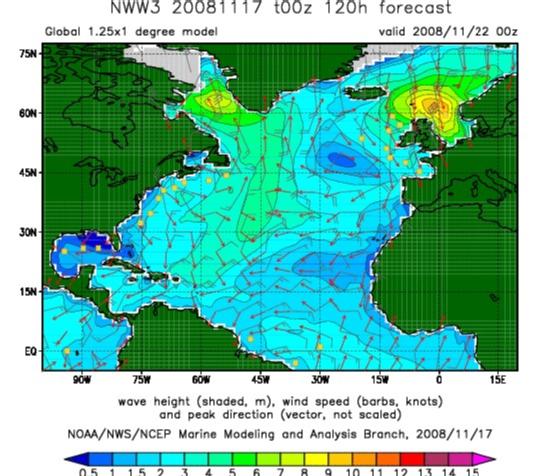Dr Simon Myerson, Leverhulme Trust Early Career Fellowship
From Diophantine Equations to Dispersive PDEs
Nonlinear dispersive partial differential equations (nonlinear dispersive PDEs) are a type of mathematical model which describes physical systems - varying from ocean waves to fibre optic cables.
It is possible to apply analytic number theory to study these PDEs.
This is because of the importance of Strichartz-type estimates in understanding dispersive equations.
For PDEs posed on a torus (think water waves in a rectangular tank), these can be interpreted as discrete restriction estimates of a type also studied in number theory.
These estimates are interpreted in terms of exponential sums, oscillating functions with intermittent large peaks.

Nonlinear dispersive partial differential equations can be used to describe physical systems, such as waves in the ocean.

A quadratic exponential sum.
In analytic number theory these exponential sums are used to study the solutions to equations and inequalities in whole numbers.
These are called Diophantine problems.
Dr Simon Myerson's Fellowship will focus on three independent, mutually beneficial parts:
-
Delivering novel Strichartz-type estimates with applications to PDEs
-
Enhancing the number-theoretic toolkit used to produce them
-
Pushing beyond the case of the torus to other manifolds.

An ocean wave height forecast, modelled using nonlinear dispersive PDEs by NOAA (Source: Wikimedia Commons).
